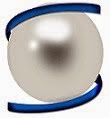Don’t Forget to Floss!
By Mina Levi DDS, 01/23/2014
Flossing should always be a part of your daily oral hygiene routine. However, as most of us are told when we visit the dentist, many people are not flossing enough or correctly. Even just by flossing once per day, the risk of gum disease decreases dramatically. Below we discuss flossing techniques, routines, and types.

Why is flossing necessary?
When you brush your teeth, you are cleaning the side and top surfaces of the teeth, which is wonderful and necessary. However, your toothbrush cannot reach in between your teeth. Flossing removes the plaque and buildup that stick to the teeth and gums in the crevices where the toothbrush cannot reach. Also, flossing helps to polish the surfaces of the teeth so they look shiny and healthy.
How often do I need to floss?
Flossing should occur for about two to three minutes at least once per day, but twice per day is even better. The best time to floss your teeth is during your night time oral hygiene regimen to ensure that the teeth are cleaned from a day’s worth of eating and chewing.
What is the best way to floss?
When flossing, make sure that you aren’t rubbing the floss from side to side. This technique is not able to lift the plaque and buildup out from the spaces between the teeth. Instead, use an up and down motion that forms a “C” pattern on the side of the tooth. Also, make sure to floss below the gum-line to get the plaque from the periodontal pockets. Flossing should not cause you any pain, but if you have not flossed in a while you may experience some bleeding. If these effects do not subside in about one to two weeks, contact the Dentist San Francisco Mina Levi DDS.
What kind of floss should I be using?

Wide floss or woven floss is the best for patients who have not very tight teeth contacts. Waxed floss is the best for patients with tight spaces between the teeth or crowding of the teeth. Un-waxed or woven floss is thicker than waxed, and makes a squeaking noise when the plaque has been cleaned from the teeth. There are also pre-
threaded flossers or floss holders that are good for people who have
limited mobility of the hands and arms, or for people just learning
how to floss. Floss threaders are good for patients who have retainer
bars attached to their teeth or patients that have a dental bridge or braces. Children should begin flossing as soon as they have two teeth that touch each other. A waterpick is often used in addition to flossing, but should not be used as a substitute because it does not remove plaque; it is just helpful for removing food from the teeth.

If you have any questions about your flossing routine, visit the Dentist San Francisco Mina Levi DDS on the web at www.minalevidds.com or give us a call at (415) 513-5066.



